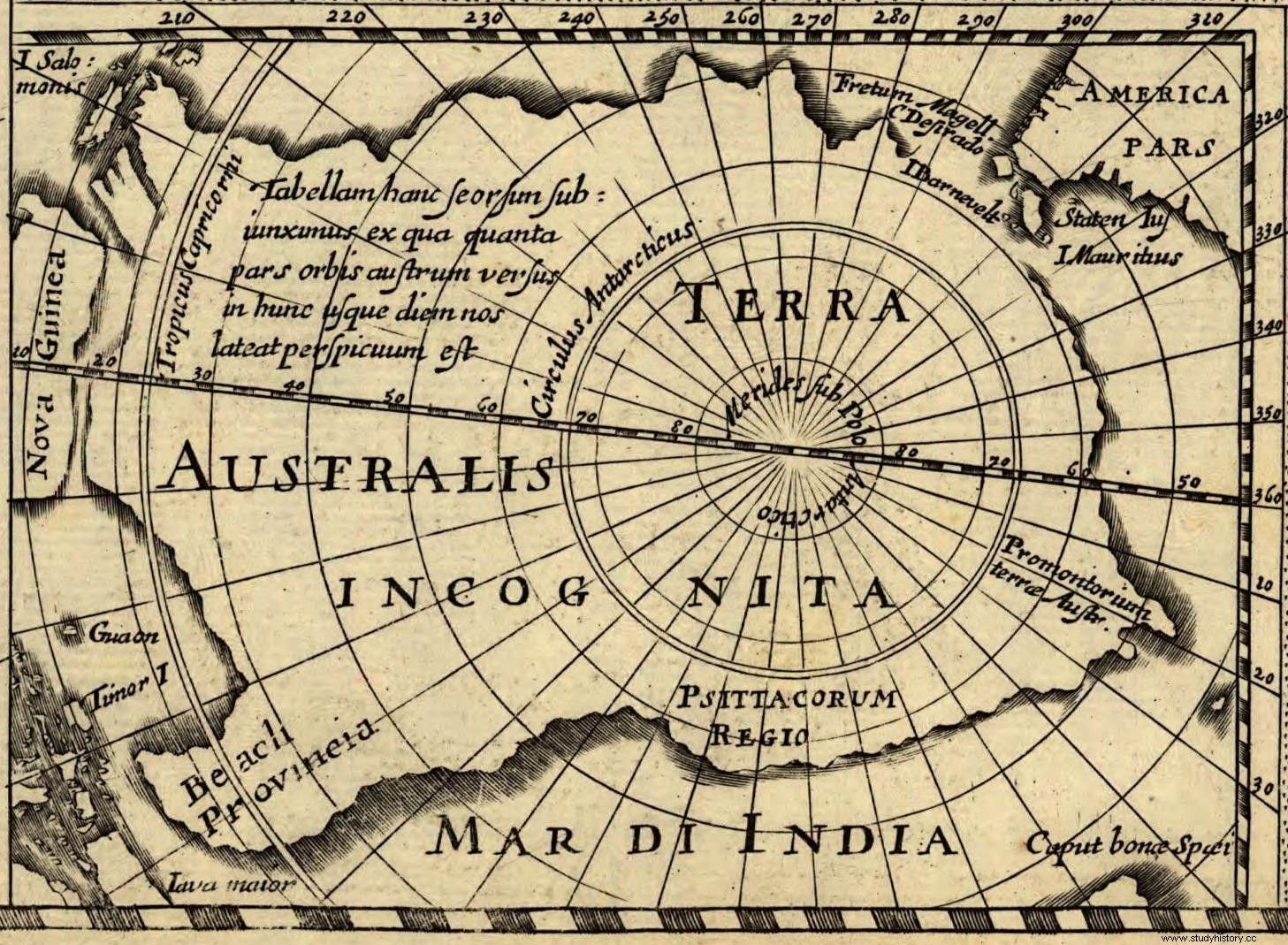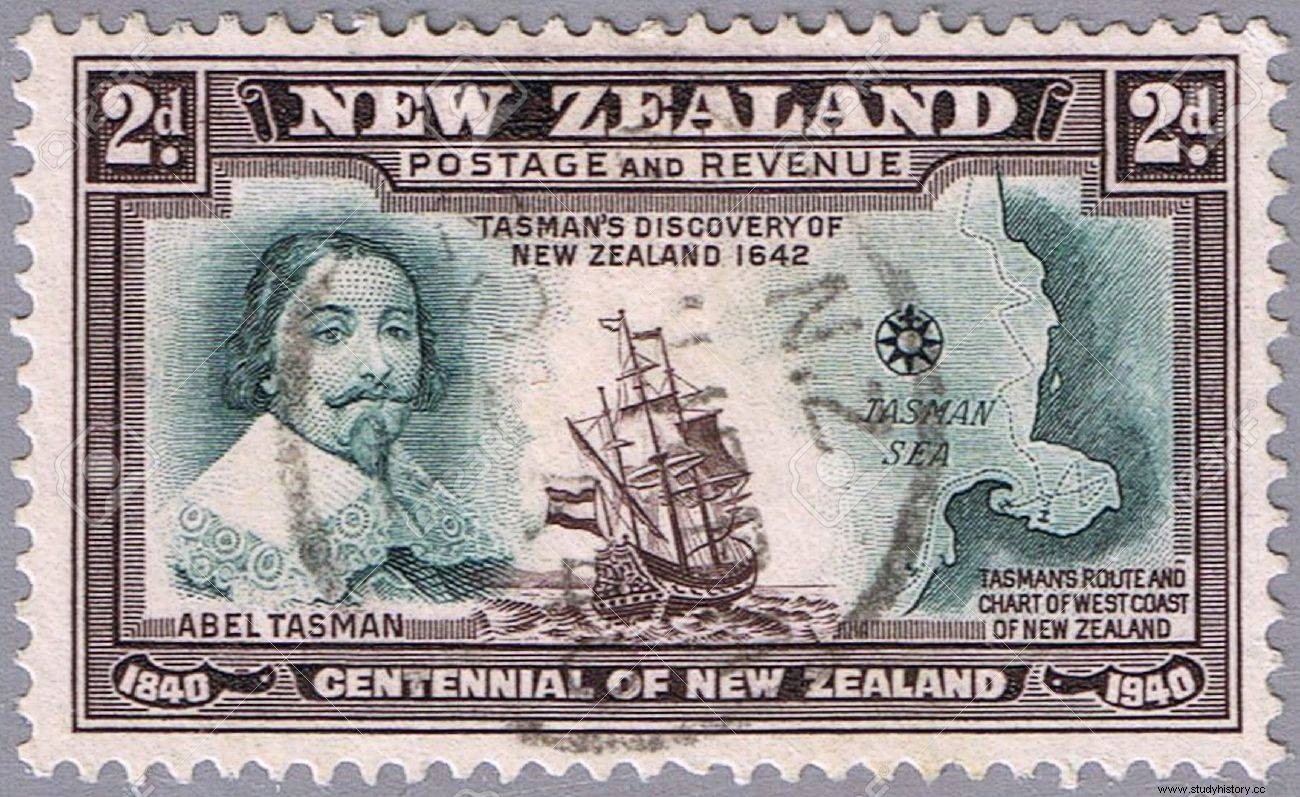There are indications that the hypothesis of the previous landing of Iberian navigators to the Dutch and English is feasible.
These are the words of the New Zealand researcher Winston Cowie in his book New Zealand, a historical puzzle , and that it would quarantine the discoveries in Oceania of the Dutch, such as Dirk Hartog , Willem Janszoon or Abel Tasman in the first third of the 17th century, and from the English James Cook in the second half of the 18th century, to the point that Te Ara:The Encyclopedia of New Zealand ("Te Ara" means "the way" in Maori), an online encyclopedia founded in 2001 by the New Zealand Ministry of Culture and Heritage, has modified one of its chapters, the one titled:European discovery of New Zealand . In the section Before Tasman , it says…
Spanish or Portuguese (...) could have reached or been shipwrecked on the coast of New Zealand. But there is no firm evidence (...) no one before Tasman reported the discovery of a new land.

And what does a Galician tree have to do with this story? Well, we owe that to Juan Piñeiro , a retired investigator from the Mabegondo Agrarian Research Center (La Coruña), when he found a pohutukawa ( Metrosideros in the current offices of the Local Police of La Coruña). excellent ), a species native to our antipodes. Due to its condition and age, it cannot be drilled to extract a sample in which to count its rings, but it is believed that it could be 500 years old and, therefore, destroy the achievements of the Dutch and British. And this is just a test, because there is still more.

The Terra Australis (The Land of the South) was an imaginary continent with origins in classical Greece. European cartographers began to capture this continent on their maps in the fifteenth century and scientists, following Aristotelian arguments, defending its existence by considering that there should be a large land mass in the South that would act as a counterweight to the best known in the North Hemisphere. And the European powers launched themselves in search of it.
Officially the Dutch Dirk Hartog, Willem Janszoon or Abel Tasman in the first third of the 17th century and, above all, the Englishman James Cook in the second half of the 18th century, were the first. Now, after new discoveries and their corresponding investigations from our antipodes, the Spanish wandering caravel San Lesmes and the Portuguese Cristóvão de Mendonça appear as protagonists of the first sighting and exploration years before the Dutch and centuries before Cook.


The irrefutable details:that Great Britain was the one that was most interested in those new lands and, therefore, colonized -although it had a lot to do with the Independence of the USA in 1776, which closed the doors to convict remittances that were sent to the new world and to those who had to look for a new destination, which was none other than Australia-, and that if the Torres Strait, between Australia and the island of New Guinea, to date continues to bear the name of the Spanish sailor who discovered it at the beginning of the 17th century is because, evidently, he discovered it -if there was the slightest bit of doubt it would have an English name-.
Which Spanish navigators were the protagonists in the search for Australia?
After two previous not very successful expeditions, in 1565 and 1595, on December 21, 1605, a third expedition set out from the port of Callao, in Peru, made up of 300 men and three ships:San Pedro and San Pablo , Saint Peter and The Three Kings . Although at the head of that fleet was the Portuguese Pedro Fernández de Quirós , who had already participated in the 1595 expedition, the brains behind it was the Galician Luis Váez de Torres . Sailing west, in May 1606 they reached what they thought was Terra Australis and that Quirós baptized as Austrialia del Espíritu Santo , in honor of the House of Austria, to which Philip III belonged, and a nod to the Church.

Actually, they were about 2,400 kilometers from the Australian coast, specifically in the largest of the New Hebrides islands, which even today retains the name "Holy Spirit", and which in 1980, after achieving its independence, became Vanuatu. Quirós, with strong religious beliefs almost bordering on the mystical, began to rave, proclaiming himself as the one chosen by the Creator for that discovery, creating the Order of the Holy Spirit and naming all his men Knights of that order. After some clashes with the natives, with food shortages and the growing discomfort of his men, on June 8, some 54 days after his arrival, Quirós ordered the New Jerusalem settlement to be abandoned, it is not known if he was in a hurry to make public your discovery or to continue exploring. On the night of June 11, a strong storm separated the three ships. The Saint Peter and Saint Paul , on board which Quirós was travelling, without being able to return to the port of the island - so Quirós told it - continued alone towards New Spain, while the other two ships were waiting in the vicinity of the bay of San Felipe and Santiago for the return of the captain. After two weeks, and thinking that he had been shipwrecked, Torres took command of the new fleet ( San Pedro and The Three Kings) and he undertook his own expedition.

Quirós arrived in Spain in 1607 and spent 7 years writing memorials of his journey and recounting, whoever wanted to listen to him, his adventures while waiting for Felipe III to recognize him as the discoverer of a new continent. In short, that he was equated with Columbus. Fact that never happened, especially with the letter that Torres wrote in Manila (Philippines) on July 12, 1607 and that arrived at the Court on June 22, 1608. What was recounted in that letter?
Torres traveled the entire coast of the island of the Holy Spirit realizing its insularity and that it really was not the continent he was looking for. He headed to the Southwest to continue the search for Terra Australis, but the winds played a trick on him and diverted him to the north of New Guinea, explored by the Portuguese and Spanish in the 16th century. He skirted the coast and entered the unknown south coast, very difficult to navigate because of the dangerous reefs. He never knew how to see that to the left of him, a few miles away, was the continent he sought out and longed for by all navigators:Australia. That passage, between the southern coast of New Guinea and the northern coast of Australia, continues to bear the name of Torres Strait, the first navigator who crossed it. Not realizing that the piece of land that could be seen on the horizon was not another island, but rather Cape York, the northernmost point in the Australian state of Queensland, he continued sailing to Manila, where he arrived on May 22, 1607. The navigation carried out by Torres has been one of the riskiest and best piloted in Pacific waters, adding to the trip the discovery of numerous islands, reefs and bays, hitherto unknown in European cartography.
Pedro Fernández de Quirós died in Panama in 1614, where the monarch sent him to get rid of him, proclaiming his discovery of Terra Australis. The last news about Luis Váez de Torres was that letter that he sent to the Court. It was never heard from again... although James Cook did know of its exploration and the existence of the strait, when the British occupied Manila between 1762 and 1764 and the Scottish geographer Alexander Dalrymple took possession of Torres's nautical charts.
So, I think it would be more appropriate to say that James Cook was the first to map the east coast of the Australian continent and not that he was the one who discovered Australia.
